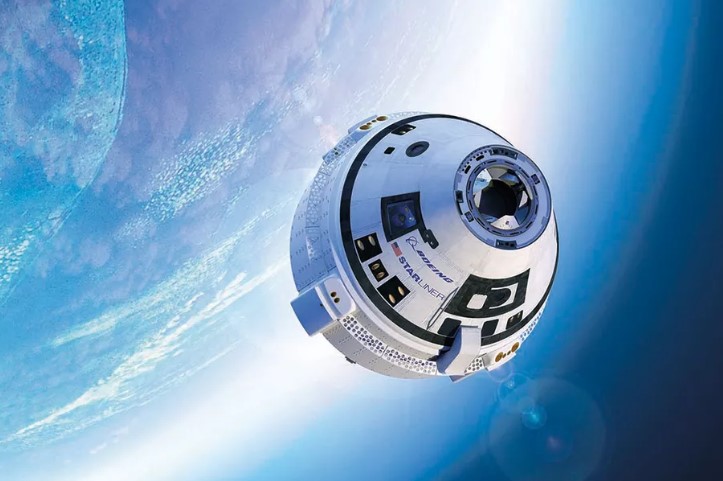
The first crewed test flight of Boeing’s new Starliner spacecraft will no longer be a quick trip to the International Space Station, but will last for months — just like a full-fledged mission. But don’t expect it to happen for a while. NASA announced today that the company is now targeting August for Starliner’s first uncrewed flight test, with the longer crewed flight happening sometime in late 2019.
The new target dates, which have already been reported, represent a significant delay for Boeing as the company readies the Starliner for flight. The Starliner is one of two vehicles being developed for NASA’s Commercial Crew program, to transport the space agency’s astronauts to and from the International Space Station.
Originally, Boeing’s first crewed test flight was set to be a short trip to the station, but NASA decided to extend the mission to give the agency more options. NASA has seats booked on Russia’s Soyuz rocket that will allow astronauts to remain on the space station through the end of the year, and the agency has considered buying more just in case the Commercial Crew vehicles are not fully ready in time. A longer crewed flight test will mean that NASA can keep astronauts on the station for much longer, ensuring that the ISS stays fully occupied with NASA astronauts and their international partners.
“NASA’s assessment of extending the mission was found to be technically achievable without compromising the safety of the crew,” Phil McAlister, director of the commercial spaceflight division at NASA, said in a statement. “Commercial crew flight tests, along with the additional Soyuz opportunities, help us transition with greater flexibility to our next-generation commercial systems under the Commercial Crew Program.”
The exact length of the extended flight hasn’t been set yet. And NASA doesn’t know exactly when it will be either, as Boeing needs to get its uncrewed test flight off the ground first. The Starliner that will be used for the test is almost ready, according to NASA, but Boeing will use the extra time to do additional testing. Ultimately, NASA is blaming the delay to August on “limited launch opportunities” in the upcoming months — the company tasked with launching the Starliner, the United Launch Alliance, has to fly a big mission for the Air Force in June, which NASA says is influencing the schedule.
Starliner development has suffered from a few setbacks, most notably an engine test failure in June of 2018. Nearly a year after the incident, the company will soon re-start that engine testing at NASA’s White Sands Test Facility in New Mexico. These engines are crucial parts of the Starliner’s emergency abort system, which can carry the vehicle to safety if there is a major problem during a flight. Eventually, Boeing must demonstrate this capability during a test before either of the two test flights can launch. However, a date for that hasn’t been set either.
All of this means that NASA’s other Commercial Crew partner, SpaceX, is poised to send crews to the International Space Station well before Boeing. SpaceX completed its first uncrewed flight of its passenger vehicle, the Crew Dragon, in March. The test appeared to go flawlessly, with the Crew Dragon successfully demonstrating that it could automatically dock with the International Space Station and then safely land in the ocean using parachutes. SpaceX now needs to do a test of its emergency escape system during a flight, followed by a crewed test.
“SpaceX is on track for a test of Crew Dragon’s in-flight abort capabilities in June and hardware readiness for Crew Dragon’s second demonstration mission to the Space Station in July,” a SpaceX spokesperson said in a statement.
























